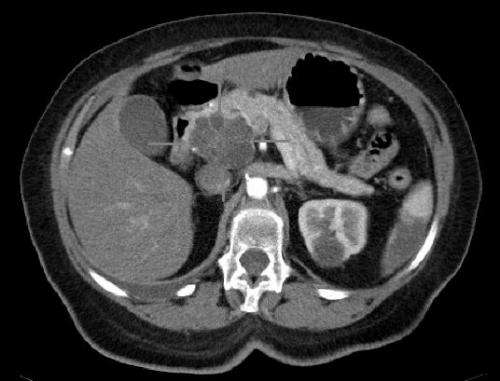Researchers identify first steps in formation of pancreatic cancer

Researchers at Mayo Clinic's campus in Jacksonville say they have identified first steps in the origin of pancreatic cancer and that their findings suggest preventive strategies to explore.
In an online issue of Cancer Discovery, the scientists described the molecular steps necessary for acinar cells in the pancreas—the cells that release digestive enzymes—to become precancerous lesions. Some of these lesions can then morph into cancer.
"Pancreatic cancer develops from these lesions, so if we understand how these lesions come about, we may be able to stop the cancer train altogether," says the study's lead investigator, Peter Storz, Ph.D., a cancer biologist.
The need for new treatment and prevention strategies is pressing, Dr. Storz says. Pancreatic cancer is one of the most aggressive human cancers—symptoms do not occur until the cancer is well advanced. One-year survival after diagnosis is only 20 percent. It is the fourth leading cause of cancer death in this country.
The scientists studied pancreatic cells with Kras genetic mutations. Kras produces a protein that regulates cell division, and the gene is often mutated in many cancers. More than 95 percent of pancreatic cancer cases have a Kras mutation.
The researchers detailed the steps that led acinar cells with Kras mutations to transform into duct-like cells with stem cell-like properties. Stem cells, which can divide at will, are also often implicated in cancer.
They found that Kras proteins in the acinar cells induce the expression of a molecule, ICAM-1, which attracts macrophages, a specific kind of immune cells. These inflammatory macrophages release a variety of proteins, including some that loosen the structure of the cells, allowing acinar cells to morph into different types of cells. These steps produced the precancerous pancreatic lesions.
"We show a direct link between Kras mutations and the inflammatory environment that drive the initiation of pancreatic cancer," Dr. Storz says.
But the process can be halted in laboratory mice, he adds. "We could do this two ways—by depleting the macrophages or by treating the transformed cells with a blocking antibody that shuts down ICAM-1," says Dr. Storz. "Doing either one reduced the number of precancerous lesions."
Dr. Storz noted that a neutralizing antibody that blocks ICAM-1has already been developed. It is being tested for a wide variety of disorders, including stroke and rheumatoid arthritis.
"Understanding the crosstalk between acinar cells with Kras mutations and the microenvironment of those cells is key to developing targeted strategies to prevent and treat this cancer," he says.















